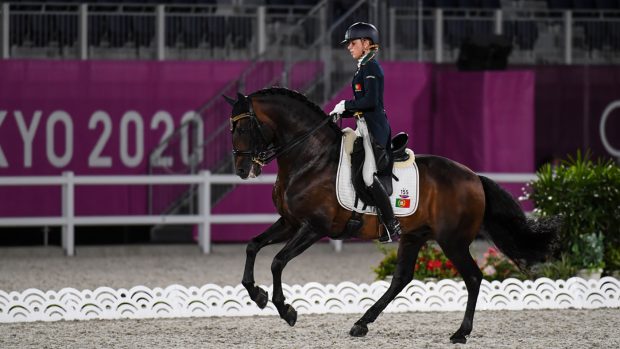The luxe red jackets, hats worthy of a fancy dress box and gleaming stallions might look familiar — but what is the Portuguese School of Equestrian Art all about?
1. It’s one of the big four
Along with the Spanish Riding School in Vienna, Royal Andalusian School of Jerez and French Cadre Noir in Saumur, the Portuguese School of Equestrian Art (EPAE) is considered to be one of the four elite classical riding academies in the world.
2. What’s its purpose?
Its aim is to preserve and teach Portugal’s long and renowned heritage of classical horsemanship and equestrian art.
3. How did it begin?
The EPAE was founded in 1979 by the Ministry of Agriculture, with Guilherme Borba and João Costa Ferreira responsible for setting it up. The school was temporarily housed at the Portuguese Equestrian Society in Campo Grande, Lisbon, and later moved to the stables in the Gardens of the National Palace of Queluz when construction work was competed in 1996.
It is a reconstruction of the Royal Riding School, the equestrian academy of the Portuguese court that was closed down in the 19th century.
3. Promoting Lusitanos
The school aims to raise the profile of the Lusitano horse through its public performances. The horses are bred at the Alter Real Stud Farm. The stud was established in 1748 by King João V to supply the royal household and its riding school with horses. Today the EPAE has around 50 Lusitano horses, all of which are stallions.
5. The kit
The riders’ kit includes a black felt tricorn hat; a bordeaux velvet coat with a black collar and gold and black braid, complete with large gold buttons with the arms of King João V; yellow metal spurs; black leather gaiters; breeches with gold buttons and a long-sleeved collarless shirt.
6. The exercises
Starting with “Baixa Escola” (or low school), the horses learn to perfect walk, trot and canter in perfect balance. Later, they go onto the Haute École exercises such as the passage, the piaffe, the pirouettes, the timed half-pass and also the airs above the ground such as the levades, the pesades, the courbettes, the balotades and the caprioles — demonstrating the splendour of baroque riding and 18th century horsemanship.
7. How you can watch them in action yourself
Like the sound of it? You can watch the school’s public shows and training at the Picadeiro Henriqe Calado in Belém, just outside Lisbon. Visit arteequestre.pt to find out more.
VIDEO: Meet Antonio Borba Monteiro, master rider at the Portuguese School of Equestrian Art
Classical trainer Jenny Rolfe from Naturally Classical, who hosts clinics with Antonio at her Devon base, talks to him about the school’s traditions, how he got involved and his way of training.
Sadly Dr Guilherme Borba, who Antonio talks about, passed away on 4 January aged 84.
If you would like to experience your own taste of the EPAE, Antonio will be holiding a clinic in Devon on 16-17 April 2016. Visit naturallyclassical.com for more information.



